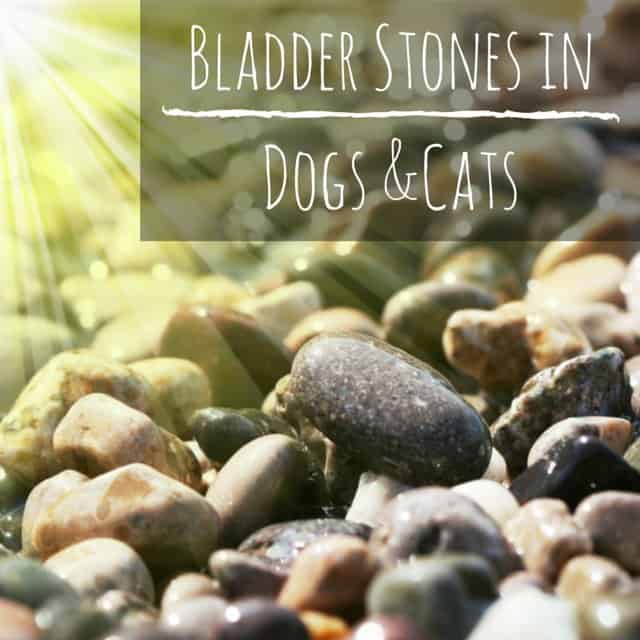Have you have noticed that your cat has stopped using their litter box suddenly, or that your male dog has started dribbling when he goes to pee? There is a good chance you may be learning about urinary calculi, also known as bladder stones.
What is a bladder stone?
A bladder stone is not something that your dog or cat ate; it is a build up of tiny crystals that ball together to make a very sharp, and painful mass known as a bladder stone. These stones can be found at any point of the urinary tract although with dogs these stones situate themselves in the bladder over 80% of the time.
Breeds such as Dalmatians, English Bulldogs, Newfoundlands and Wolfhounds are more prone to bladder stones than others. In the cat world breeds such as Egyptian Maus, Himalayans and Ragdolls are the breeds with the highest incidents of bladder stone growth. While both dogs and cats can suffer from this painful disorder, dogs are more susceptible than cats and make up 80% of bladder stone cases.
Not all bladder stones are the same. Usually, bladder stones are made of ammonium, calcium oxalate, calcium phosphate, cysteine, and/or urate. Bladder stones known as struvite form from a compound of magnesium ammonium phosphate and are very common in dogs.
How do they form?
More often than naught, bladder stones develop due to:
- Dehydration
- Poor nutrition
- Urinary tract infection
- Urinary pH imbalance
- Medication
- Genetics
- Medical conditions
While some animals will end up with bladder stones due to something else, these are the most common culprits.
These stones form when there is an abundance of mineral crystals that start off finer than sand, but quickly join to form large masses. While many bladder stones are small enough to be passed in your pet’s urine which is a very painful process, others may linger in the pet’s bladder and continue to grow. This buildup can cause a complete obstruction of the urinary tract making it impossible for the animal to go to the washroom.
Bladder stone symptoms
Often symptoms of bladder stones consist of unusual behavior, frequent genital licking, poor urinary flow, a sudden aversion to the litter box and going to the bathroom in the house. In other pets, there may not be any symptoms at all. It all depends on your pet, the size and type of stone, their location and the pet’s pain tolerance.
How are they diagnosed?
Diagnosis can be through many different avenues. Veterinarians can discover them through regular examinations when feeling their bladder region; other ways are through X-Ray or finding the stones themselves in the pet’s urine. Regardless of how your veterinarian finds the bladder stones, it is important that you seek treatment prior to the problem getting worse leading to further complications.
How are bladder stones treated?
Bladder stones can be treated in a number of different ways depending on the type and severity of the blockage. In very mild cases, a change in diet and increase in fluid can resolve the issue without further incident although the improved diet and water intake should be a lifelong change. In other cases, it is possible to flush the stones manually out using a catheter using a technique called Urohydropropulsion.
In more severe cases, lithotripsy or surgery would be required. Lithotripsy is where the veterinarian will break up the stones using a form of controlled localized shock waves. This technique allows the stone fragments to then be flushed out of the system without surgery, therefore, reducing potential infection an incision would create. This procedure is particularly effective for stones found in the urethra of male dogs.
Surgery for bladder stone removal is not to be lightly taken, and a veterinarian would not suggest it unless needed as it is a relatively complicated procedure. A veterinarian will perform this procedure when the veterinary office does not have access to the equipment necessary or when there are contraindications to lithotripsy. Contraindications can consist of issues such as very large stones, a high number of stones or small male dogs due to the size of their urethra.
Often once the initial treatment is complete, the pet is susceptible to the same issue recurring, particularly in the cases that are not diet or water related. Almost all veterinarians will prescribe a diet based on what your pet requires (whether the pH of the urine needs to be raised or lowered) based on the composition of the bladder stones themselves.
If left untreated, bladder stones will continue to grow causing your pet discomfort and complete blockage. Once the pet has reached this stage, emergency medical treatment is necessary. If it is left untreated the animal will die a very slow and painful death due to rupture. So obviously if you observe any signs or have any inkling of trouble… go see a vet!
